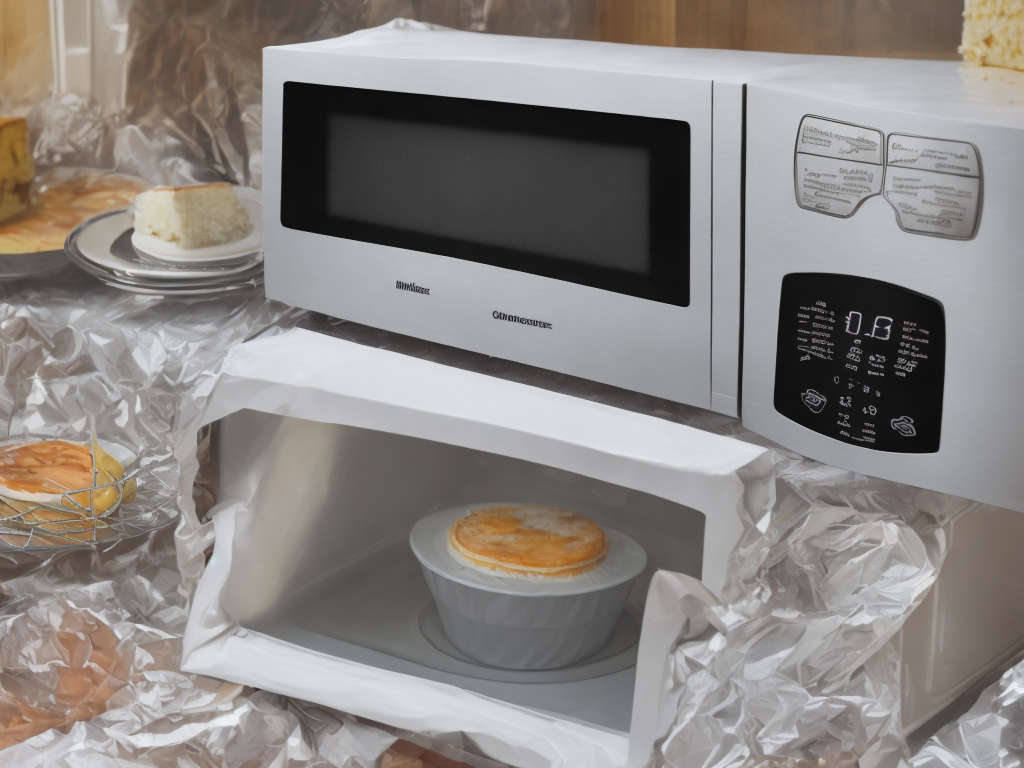
Microwaves and ovens are some of the most common kitchen appliances, and as such, people tend to use them interchangeably. However, despite their similarities, these appliances are built to serve different purposes. This article aims to highlight the differences between a microwave and an oven and the best scenarios in which to use either of the appliances.
Microwave
A microwave oven, commonly referred to as a microwave, is a kind of kitchen appliance that uses microwave radiation to prepare food. The waves penetrate the food and generate heat from within the food. Microwaves have become increasingly popular since they offer an excellent solution to time-consuming food preparation, especially in modern society where people have busy schedules. The time-saving feature of a microwave makes it a sought-after appliance in the kitchen.
Microwaves come in many shapes and sizes, from compact and portable models to larger built-in ovens. Portable models are typically used in offices or shared living spaces such as college dormitories, while larger models are used as the primary cooking appliance in many households.
Microwave ovens have a turntable that rotates the food, which ensures that the food gets evenly cooked. With a microwave, the user can defrost, reheat, or cook food. The built-in timer and power ratings of microwaves make it easy for users to prepare their meals precisely. The quick-heating feature of microwaves makes it an appropriate appliance for warming foodstuffs, including leftovers and precooked meals.
Oven
An oven, on the other hand, is a heat-producing appliance used to cook or bake food by radiation, primarily through a heating element or gas flame. Ovens are made with thermal insulation materials, making sure that heat is distributed evenly while cooking. Ovens are built for more delicate dishes such as cakes, bread, and roasts since they provide a more gentle and consistent heat supply.
There are different types of ovens, including conventional ovens, convection ovens, and self-cleaning ovens. A conventional oven has a flat bottom heated by a coil under the oven. As such, the heat tends to rise and settle at the top of the oven before escaping through the oven vent. Convection ovens, on the other hand, are fitted with fans and exhaust systems with the purpose of evenly distributing heat within the oven chamber. A self-cleaning oven, as the name suggests, is designed to minimize the cleaning efforts required after use. It uses high temperatures to burn off any food residues left in the oven, making cleaning easier for the user.
Differences Between Microwave And Oven
Now that we have understood the basic premise behind microwaves and ovens let us analyze the core differences that set the appliances apart.
Cooking Time And Technique
One of the primary differences between microwaves and ovens is the cooking time and technique. Microwaves use electromagnetic waves to heat food quickly, which means that the cooking time is much shorter. A microwave can heat food in a matter of seconds, whereas conventional ovens take much longer. The time difference is attributable to the way each appliance produces heat. While microwaves heat food from within, ovens primarily heat food through radiation heat.
Cooking Method
A microwave oven is used for cooking and heating with the aid of electromagnetic waves that ensure the food is heated evenly. Microwave ovens have a small cavity chamber that concentrates the waves on the food, ensuring uniformity in heating. Conversely, an oven is used to bake or roast food where heat is primarily supplied through a gas or heating element. Ovens can provide different cooking methods such as broil, bake, and roast to prepare various dishes.
Quality of Cooking
The cooking quality of microwaves and ovens is also different. Ovens provide an even heat source, making them suitable appliances for baking, roasting, or cooking delicate dishes. The even heating ensures that the flavors, texture, and nutritional value of the food are preserved. In contrast, microwaves may not provide an evenly cooked meal, as they lack the heat continuity required to bake or roast food evenly. Additionally, microwaves offer minimal browning or crispness.
Size
Microwaves come in smaller sizes, making them suitable for small kitchens or for students in shared dormitories. As such, they are ideal for those with limited space or budgets. Ovens, on the other hand, are relatively larger and take up more space in the kitchen but provide more cooking options such as broil, bake, and roast.
Energy Consumption
Finally, energy consumption is another difference between the two appliances. Microwaves draw more electricity when heating food quickly. In contrast, ovens take longer to heat food and provide an even temperature, making them more cost-effective. However, ovens consume more energy when used for long periods, such as when baking cakes or roasting meat.
So, Which Appliance Should I Choose?
The best appliance between ovens and microwaves depends on the user's needs. When limited on space and looking for an appliance that saves time and energy, then a microwave would be the best option. However, if the intention is to prepare a well-cooked meal with a crispy texture, an oven would be more suitable. A convection oven provides the best option for evenly cooked meals.
In conclusion, microwaves and ovens have different specifications and are most effective under different circumstances. As such, it's essential to understand the unique features of each appliance and its best-use scenarios. Being well-versed with the appliances can enhance meal preparation processes and lead to better cooking experiences.
 Self-Instruct
Self-Instruct